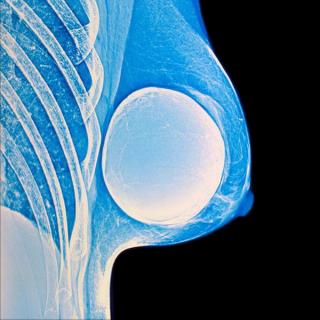
Finally, We Have Biological Clues About Women’s Higher Alzheimer’s Disease Risk
Three different studies have identified genes and brain biomarkers that could explain why Alzheimer’s is a woman’s disease.

New research presented at the recent Alzheimer’s Association International Conference (AAIC) 2019 in Los Angeles has identified biological reasons why women are two to three times more likely to develop Alzheimer’s disease than men are.
Until now, this was attributed to women simply living longer than men do, and therefore, having a higher chance of developing Alzheimer’s. Other research suggests that physiological consequences of social inequity such as lack of sleep and decreased mental health contribute significantly to Alzheimer’s being known as a woman’s disease. Research presented at the AAIC takes us one step further in understanding the sex-specific nature of Alzheimer’s by having identified biological differences in the way the disease progresses in men and women.
Sepideh Shokouhi, PhD, assistant professor of psychiatry and behavioral sciences at Vanderbilt University Medical Center, and colleagues looked at how tau protein — a toxic protein that causes brain cell death when clumped together and is commonly associated with cognitive decline in Alzheimer’s — spreads differently in the brains of men and women. They compared PET scans of healthy people to those with mild cognitive impairment by mapping the brain as a network of tau-connected regions. The research found that women with cognitive impairment had the highest density of tau networks along with higher overall tau burden. The study also found healthy women had several key regions in the brain that served as hubs connecting other, different regions of the brain, which could accelerate the brain-wide spread of tau in women. “The differences that we observed indicate the strong possibility that there are sex differences in the structural and functional connections in the brain, which may contribute to women’s increased risk for Alzheimer’s,” Shokouhi said at the conference, as reported in a press release.
Related on The Swaddle:
Modern Family: Explaining Alzheimer’s, Illness to Kids
Besides being at a higher risk of developing Alzheimer’s, the deterioration of women’s cognitive abilities is less likely to be caught in earlier stages as compared to men, because women are proven to outperform men on verbal memory tests, in general, and in early stages of the disease — even with the same degree of Alzheimer’s progression.
To investigate the reason behind this, Erin Sundermann, PhD, a neuropsychologist at the University of California, San Diego, School of Medicine, and colleagues from other institutions, compared the brain’s ability to metabolize glucose — a primary energy source for the brain and a measure of brain function — between 569 men and 453 women at different stages of Alzheimer’s. The research showed that women in the initial stages of Alzheimer’s showed higher levels of glucose metabolism than men, suggesting that women compensate for Alzheimer-related brain changes by increased brain metabolic function; this, researchers say, may contribute to the advantage they have in verbal memory tests in the disease’s early stages.
Research presented by Brian Kunkle, PhD, MPH, genetic epidemiologist and associate scientist at the University of Miami, and genomics teams at other institutions at the conference, suggested that genetic differences in men and women lead to women’s increased risk and faster progression of Alzheimer’s. In what was dubbed as the “largest-ever Alzheimer’s gene study” with more than 94,000 participants, the researchers found sex-specific genetic associations with Alzheimer’s for 11 different genes, including two genes crucial to immunity and found only in women.
Previous research has also suggested (yet to be accepted entirely by the medical community) that women’s hormonal system — estrogen, in particular — plays a big role in their neural health; with the onset of menopause in their 50s, there is a dip in estrogen levels, which has been linked to the onset of psychiatric disorders.
Progress has been painfully slow on the R&D front for Alzheimer’s disease in the face of a grim reality: by 2050, there will be thrice as many people with Alzheimer’s disease in India as there are now. Most patients will be women. Scientists are finally beginning to understand the why and how of Alzheimer’s in a tangible, biological way, as evidenced by these findings of various studies. Sundermann, of Vanderbilt University, says: “As the field moves towards using brain changes and biomarkers to measure Alzheimer’s risk, this research is important in understanding how these changes differ by sex. By doing so we can develop more personalized dementia risk measurements and interventions.”
Pallavi Prasad is The Swaddle's Features Editor. When she isn't fighting for gender justice and being righteous, you can find her dabbling in street and sports photography, reading philosophy, drowning in green tea, and procrastinating on doing the dishes.
Related


Early Warning Signs Can Help Detect Eating Disorders
